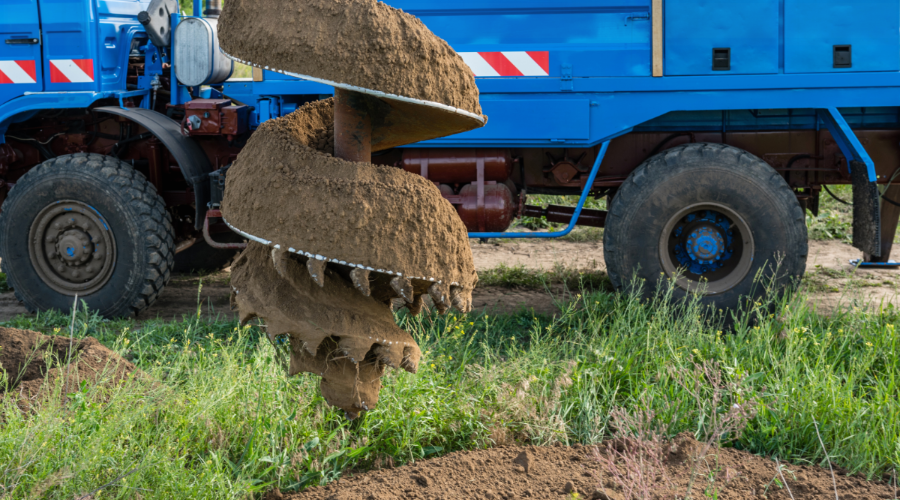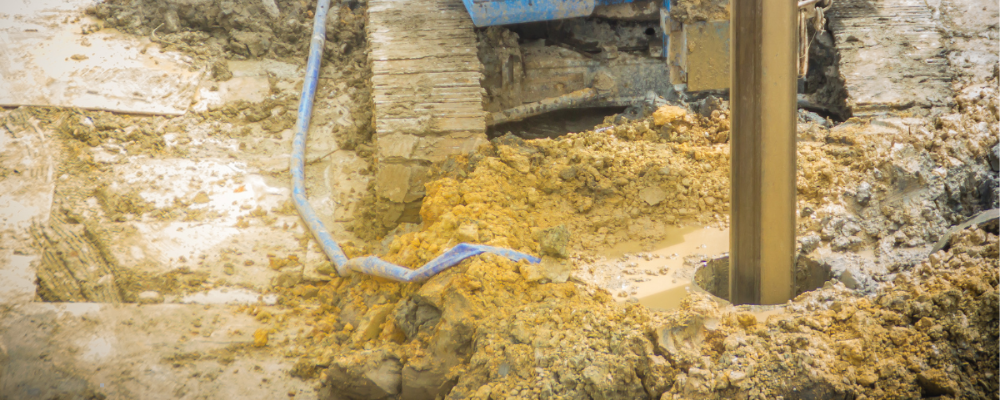Bored piles, also known as drilled shafts or replacement piles, are a deep foundation for strong and flexible construction. Generally, these piles are formed by drilling into the ground and then filling the hole with reinforced concrete. The speciality of these piles is that they extend more than 60 meters deep and reach a width of 2.4 meters.
Bored piles are suitable for sustaining heavy loads and withstanding settlement. Moreover, they are particularly preferred in cities where builders need the least amount of vibration at the time of installation and adjustability with soils of diverse properties. Innovative techniques such as post-grouting optimise their capacity for carrying loads, especially through gravel, pebble, and silty sand deposits. Let us learn more about bored piles in this post.
What Are Bored Piles?
A bored pile is a deep foundation made by drilling cylindrical holes into the ground, stabilising them using casing, and grouting them with reinforced concrete. These piles transmit structural loads through end-bearing and skin friction to stable soil or rock layers.
They are custom-sized in depth (100+ meters) and diameter (300 – 3,000+ mm), and they reduce vibration and noise, being particularly suitable for urban developments such as high-rise buildings, bridges, and offshore platforms where conventional foundations are unsuitable. Reinforced for longevity and heavy loading capacity.
Types of Bored Piling
There are various bored piling methods utilised in construction, each with its advantages according to project requirements and soil conditions. The two common types are,
1. Rotary Bored Piling
Rotary bored piling is used when there are obstructions in the ground. A temporary casing is installed in order to support the hole as soil or rock is excavated. Then, a steel cage reinforcement is put in place, and the hole is filled with concrete. The casing is extracted, leaving a solid foundation.
2. Continuous Flight Auger (CFA) Piles

CFA piles consist of an auger that, while injecting the concrete, augers into the ground to stabilise the excavation. They are quick, efficient, and perfectly suited for soft soils, avoiding vibration and noise for cityscape use.
Application of Bored Piles
Bored piles have a wide range of applications in construction, offering reliable support across various projects:
1. Bridge Construction
Bored piles are especially useful for supporting bridges in difficult soil conditions. With a penetration depth of more than 60m and a maximum diameter of 2.4m, they are able to transfer heavy loads without collapsing the bridge structure.
2. High-Rise Buildings
Bored piles are particularly well-suited for such locations to provide support for tall buildings, as vibrations and noise can be regulated without influencing nearby structures.
3. Industrial Complexes
Bored piles are flexible enough to suit varying soil types, so they are also utilised in large industrial complexes that need deep, stable foundations.
4. Earth Retention Systems
Bored piles are also used to form secant or tangent pile walls for earth retention and slope stabilisation, offering greater protection against landslides and erosion.
These applications indicate the adaptability and reliability of bored piles in carrying out a variety of construction projects.
Advantages of Bored Piling
Bored piling offers several benefits to construction projects, such as,
Load-Bearing Capacity
Bored piles are designed to carry heavy vertical and lateral loads, and they are suited for heavy structures like high-rise buildings, bridges, and industrial complexes. They are able to transfer loads to denser layers of soil below, which guarantees long-term stability and safety for the structure.
Versatility
Because bored piles can be modified to suit a wide range of underlying soil conditions and geological features, they are ideal for working in very challenging and confined conditions, especially when compared to driven piles.
Minimal Noise and Vibration
Bored piles have less noise generation and vibration from installation, in contrast to other foundation techniques. Therefore, they are a good eco-friendly solution for work sites, especially in areas with noise controls.
Due to these benefits, bored piling is a trusted and effective foundation solution for various types of construction.
Bored Piling Construction Process
The bored piling construction process involves several essential stages:
Drilling
The process begins by drilling a vertical hole into the soil using a bored piling machine. This machine is equipped with materials like buckets to remove soil and rocks, with depths reaching up to 60 meters and diameters up to 2.4 meters.
Steel Cylinder Insertion
During the building process, a rebar cage is inserted into the drilled hole, and a temporary steel cylinder is used to maintain its stability. This keeps the hole intact until the pile is poured.
Rebar Cage and Concrete
A rebar cage is then inserted into the hole after putting in the steel sleeve, and then the hole is filled with concrete. This creates the structural pile for the foundation.
Capping
At last, the top of the bored pile is capped with a footing or a pile cap. This allows the structure above to be securely supported while completing the foundation process.
As bored piling requires significant expertise in construction methods and soil conditions, hiring a professional bored piling contractor is highly recommended.
Quality Control and Testing of Bored Piles
Testing and quality control are necessary to confirm the performance and reliability of bored pile foundations. The primary techniques are
1. Non-Destructive Testing (NDT)
Non-destructive testing widely used technique, such as low-strain integrity testing, sonic logging, and thermal integrity profiling, detects defects in piles without causing damage. These techniques help to determine the quality of the pile and confirm it satisfies design requirements.
2. Sampling Inspection
Since testing all piles is difficult, a sampling technique is used to test 5% to 10% of the piles. This method indicates potential defects based on soil conditions and engineering judgment.
3. Quality Assurance Programs
These programs monitor the construction process and ensure that any defects are detected early. An effective QA program builds confidence in the overall performance and longevity of the pile foundation.
Utilizing bore pile testing methods creates high-quality bored piles and minimizes the occurrence of structural failure.
To Sum Up
Bored piles are a good solution for building construction and deep foundations. They can withstand a heavy load and adjust to different soil types. Also, bored piles reduce vibration at installation, which makes them ideal for urban and challenging sites.
The process is explained in detail, providing stabilization and endurance through quality control and proper testing. Bored piling is the most crucial matter in modern-day construction, as it allows buildings to stay strong and last longer than usual.

